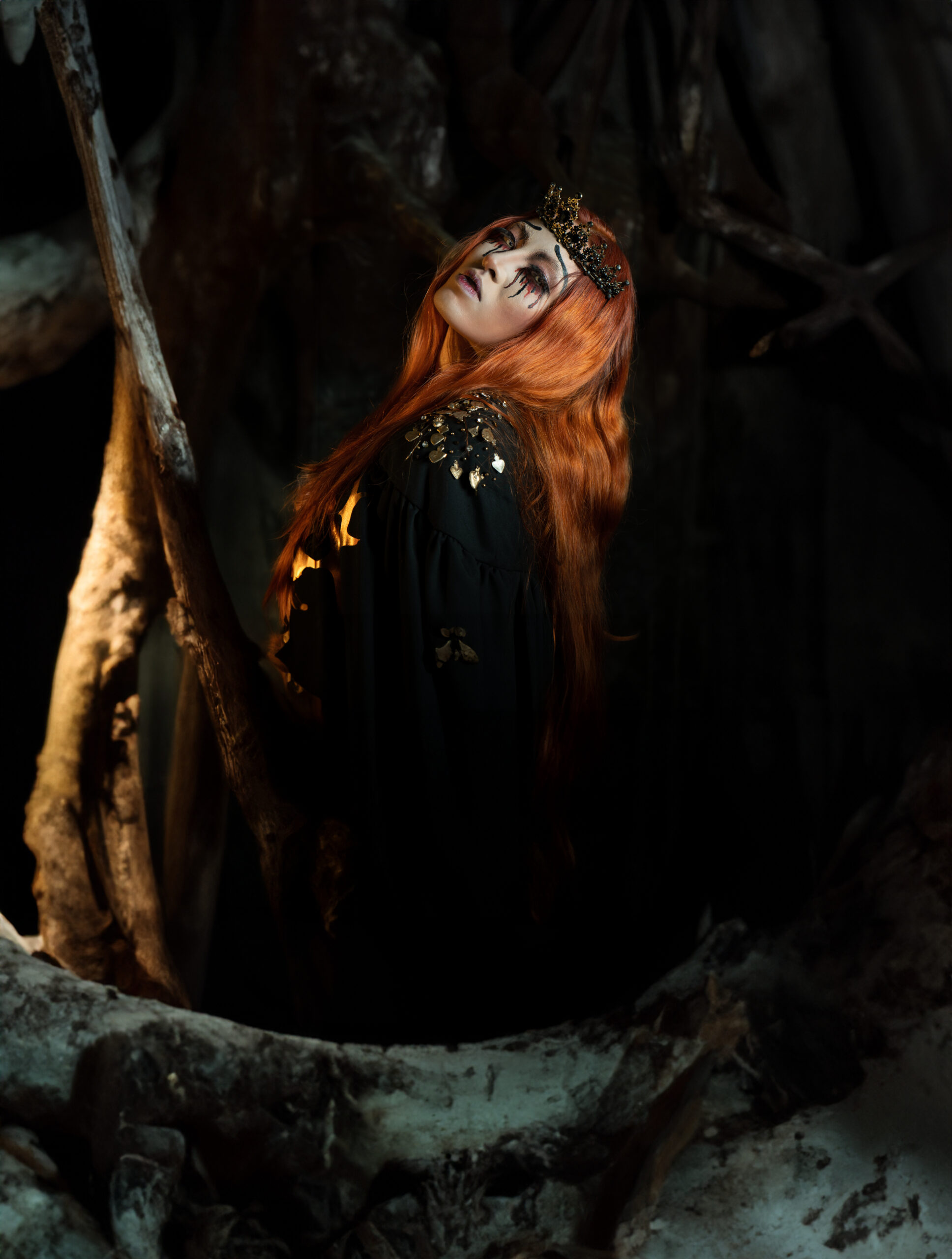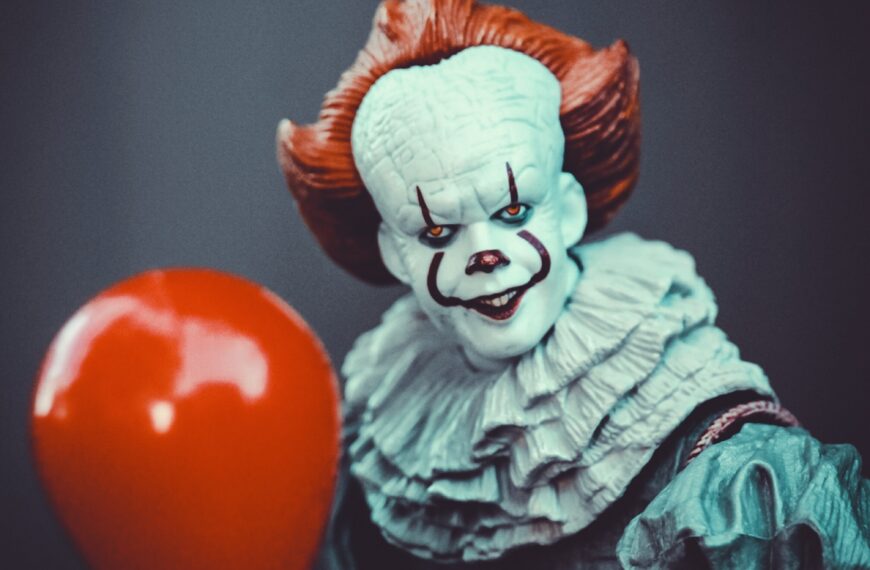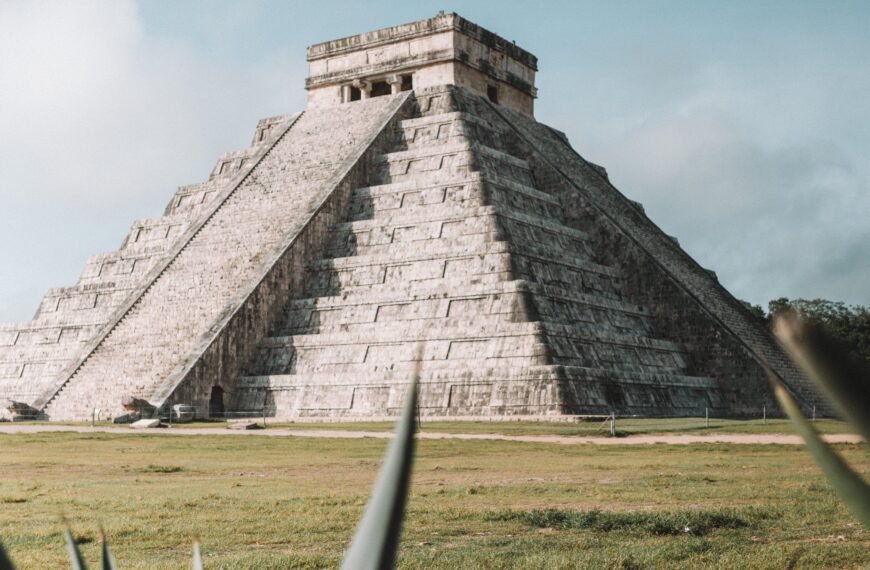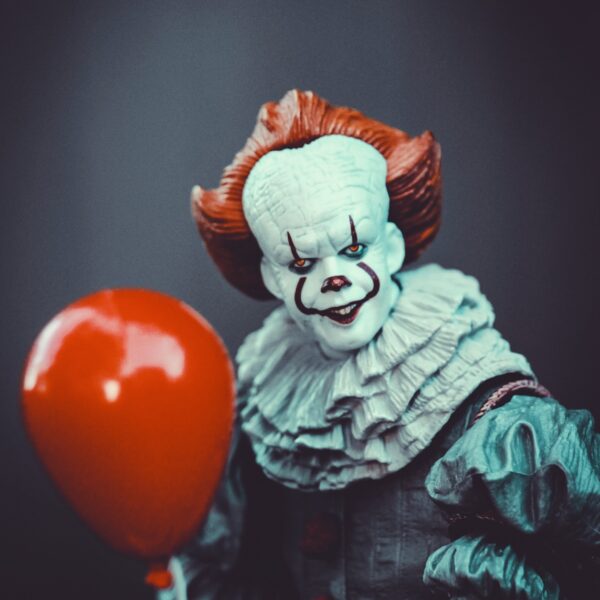The article titled “OBJECTIVE OF MYSTERIUM” provides a comprehensive overview of the popular board game, Mysterium. The objective of the game is to solve a murder mystery using clues given by a ghost player. The article not only describes how to set up the game and its components but also outlines the gameplay for both the ghost and the psychic players. It explains the role of clairvoyance tokens, ravens, and the clock board in the game. Additionally, it details the setup and gameplay for both phase one and phase two. With its clear and concise explanations, this article serves as a valuable resource for anyone interested in playing Mysterium.

Objective of Mysterium
The objective of Mysterium is to deduce the correct answer for the murder using the ghost’s clues. Players must work together to uncover the identity of the culprit, the location of the crime, and the murder weapon. The ghost provides the players with visions and clues to guide them towards the correct answers. It is a cooperative deduction game where players must use their intuition and deductive reasoning skills to solve the mystery.
Using the Ghost’s Clues
In Mysterium, the ghost plays a crucial role in guiding the players towards the correct answers. The ghost, who is a player themselves, will use a deck of ghost cards to provide the players with visions and hints. These visions can be in the form of abstract images or symbols that the players must interpret. The ghost must carefully select and give out these visions to lead the players to the correct suspects, locations, and murder weapons.
Number of Players
Mysterium can be played with 2 to 7 players. The game is designed to accommodate a range of group sizes, making it suitable for both intimate gatherings and larger parties. The number of players will affect the gameplay dynamics and the amount of interaction between players. With more players, there are more interpretations and discussions to consider, adding an extra layer of complexity to the game.
Materials
To play Mysterium, players will need several materials:
- Character sleeves: These are used to hold the character cards and keep them hidden from other players.
- Character markers: These are used to indicate the player’s chosen suspect.
- Player clairvoyance markers: These markers are used to track the player’s progress and clairvoyance level.
- Clairvoyance tokens: These tokens are used by players to vote on other players’ guesses.
- Clock board: This board is used to track the passage of time and the progress of the game.
- Progress boards: These boards are used to track each player’s progress in finding the correct suspects, locations, and murder weapon.
- Psychic cards: These cards represent different suspects, locations, and murder weapons.
- Minute hourglass: This hourglass is used to time each player’s turn during the game.
- Clairvoyance tracker: This tracker is used to keep track of each player’s clairvoyance level.
- Ghost cards: These cards are used by the ghost to provide visions and clues to the players.
- Game screen: This screen is used by the ghost to secretly assign ghost cards to each player.
- Ghost tokens: These tokens are used to mark the progress of the ghost in leading the players to the correct answers.
- Culprit tokens: These tokens are used to mark the correct answers for the suspects, locations, and murder weapons.
- Crow tokens: These tokens are used by the ghost to discard their hand of vision cards and draw a new hand.
- Vision cards: These cards represent the visions and clues given by the ghost to the players.
Having these materials is essential for playing Mysterium and ensuring a smooth and immersive gameplay experience.

Type of Game
Mysterium is a deduction murder mystery game. It requires players to analyze clues, interpret visions, and make logical deductions to solve the mystery. The game is designed to challenge players’ critical thinking skills and ability to work together as a team. It creates an immersive and suspenseful atmosphere as players uncover the truth behind the murder.
Audience
Mysterium is suitable for players aged 10 and above. The game’s complexity and gameplay mechanics make it challenging and enjoyable for older players, while still accessible to younger players. It is a game that can be enjoyed by families, friends, and gaming enthusiasts of all ages.
Overview of Mysterium
Mysterium is played with two types of players: psychics and the ghost. The goal of the ghost is to lead the players to the correct suspects, locations, and murder weapons through visions and clues. The psychics must work together to find their solutions and the final solution before time runs out.
The game is divided into two phases: setup and gameplay. During setup, players are assigned their roles and given their character markers, clairvoyance markers, and clairvoyance tokens. The ghost sets up the game by distributing psychic cards and secretly assigning ghost cards to each player.
In gameplay phase one, the ghost provides visions and clues to the players. The players must decipher these visions and choose the correct suspect by placing their character markers on the character progress marker. The ghost then reveals if the players’ guesses are correct or incorrect.
Clairvoyance tokens and the clairvoyance tracker are used by players to vote on other players’ guesses and track their clairvoyance level. Ravens can be used by the ghost to discard their hand of vision cards and draw a new hand.
The clock board indicates the passage of time, and players must complete phase one before the clock strikes 7. If they fail to do so, the game is over, and all players lose.
In gameplay phase two, players have their solutions and must deduce the correct solution. The ghost provides three cards to indicate the character, location, and object. Players have as much time as they need to analyze the clues and cast their votes. The solution with the most votes is guessed, and if it matches the ghost’s culprit token, the players win the game.
Types of Players
In Mysterium, there are two types of players: psychics and the ghost. Each player has a unique role and objective in the game.
Psychics are the players who are trying to solve the murder mystery. They must work together to find their individual solutions and the final solution before time runs out. Psychics must use the visions and clues provided by the ghost to deduce the correct suspects, locations, and murder weapons. They must communicate and collaborate with each other to share information and make informed decisions.
The ghost is a player who assists the psychics in solving the mystery. The ghost’s objective is to guide the psychics to the correct answers using visions and clues. The ghost must carefully select and give out these visions, as they cannot directly communicate with the psychics. They must rely on the abstract and symbolic nature of the visions to convey the necessary information. The ghost plays a crucial role in creating an immersive and mysterious atmosphere in the game.

Goal of the Ghost
The ghost’s goal in Mysterium is to lead the players to the correct suspects, locations, and murder weapons. The ghost must use the visions and clues provided through the ghost cards to guide the psychics towards the correct answers.
The ghost must select visions that can elude to one of the character cards associated with a player’s solution. They can give multiple cards or just one, but they must give all the cards at once. The ghost’s role is to provide enough information to the psychics to make informed decisions but without directly revealing the answers.
By successfully leading the players to the correct answers, the ghost can ultimately lead all players to make the correct solution guess. The ghost’s challenge is to convey the necessary information in a subtle and mysterious way, keeping the players engaged and intrigued throughout the game.
Goal of the Psychics
The goal of the psychics in Mysterium is to find their individual solutions cooperatively and the final solution before time runs out. The psychics must work together to analyze the visions and clues provided by the ghost and deduce the correct suspects, locations, and murder weapons.
By sharing information, discussing their interpretations of the visions, and collaborating as a team, the psychics can increase their chances of success. They must carefully consider each other’s theories and votes to make informed decisions.
The psychics must complete phase one by correctly guessing their characters and advancing on the location progress marker. They must also advance past the object progress markers and have their full individual solutions ready to proceed to phase two.
The success of the psychics relies on their ability to communicate effectively, analyze the clues, and make accurate deductions within the time constraints of the game.
Setup: Phase One
Before the gameplay begins, the game must be set up. In phase one of the setup, one player is selected as the ghost, and the other players each receive a character sleeve, marker, clairvoyance marker, and a number of clairvoyance tokens based on the number of players.
The ghost is responsible for setting up the game. They distribute the psychic cards to the players in accordance with the number of players. They then secretly assign ghost cards to each player using the game screen. The vision cards are shuffled and placed next to the ghost, and the necessary crow tokens are set aside.
Once phase one setup is complete, the game can proceed to phase one gameplay.
Setup: Phase Two
Phase two setup occurs after all players have correctly guessed their characters, locations, and murder weapons in phase one gameplay. In this phase, all unused cards and the location, character, and object progress markers are removed from the game.
The ghost sets out the ghost tokens, and each player assigns their solutions to one of the ghost markers. The ghost then secretly determines which solution will be the correct one and places the corresponding culprit marker facedown on the epilogue progress marker.
Once phase two setup is complete, the game is ready to proceed to phase two gameplay.
Gameplay: Phase One
Phase one gameplay begins with the ghost drawing the top 7 cards from the vision deck. The players place their character markers on the character progress marker, indicating their guess for the suspect.
The ghost then starts providing visions and clues to the players. They must carefully select and give out the visions, considering the character cards associated with the players’ solutions. The ghost can give multiple cards or just one, but they must give all the cards to the player at one time.
Once a player has been given their vision cards, they may not receive any more clue cards during this round. The ghost refills their hand to 7 cards and continues providing visions until all players have received their vision cards.
After the last player receives their vision cards, the timer starts, and all players have one minute to cooperatively decode their clues and choose a character to accuse by placing their character marker on it.
Once the minute is up and all players have chosen their characters, the ghost goes player by player to announce if they are correct or incorrect. If a player is correct, they advance to the location progress marker, take the character cards, and place them in their sleeve. They also return all their vision cards to the ghost for discard.
If a player is incorrect, they do not advance and instead go back to the character progress marker. They know that the character chosen is not part of their solution and keep all their vision cards for the next round.
The gameplay continues with the ghost providing visions and the players deciphering and making their choices based on these clues. The ghost must carefully guide the players towards the correct answers without directly revealing the solutions.
Gameplay: Clairvoyance Tokens and Tracker
Clairvoyance tokens are used by players to vote on other players’ guesses. Each player can use the clairvoyance tokens to indicate whether they agree or disagree with a specific guess. A checkmark symbolizes agreement, while an X symbolizes disagreement. Players can only vote once on each guess.
The clairvoyance tokens are used up once they are used to vote. After the votes are resolved, the tokens are placed on the clock board. The tokens refresh when the clock strikes 4, and all used tokens are returned to the players.
The clairvoyance tracker is used to track each player’s clairvoyance level. It starts at zero for each player, and the level increases by one for each correct vote. The clairvoyance level can determine the number of cards a player will see for the final solution and also acts as a tiebreaker in case of a tie.
The use of clairvoyance tokens and the clairvoyance tracker adds an additional strategic element to the gameplay and allows players to express their confidence in other players’ guesses.
Gameplay: Ravens
The ghost has the option to use ravens during gameplay. Ravens allow the ghost to discard their entire hand of vision cards and draw a new hand with 7 cards. The ghost can use ravens as many times as they have available, but once a raven is used, it cannot be used again for the remainder of the game.
Ravens provide the ghost with a fresh set of visions and clues, allowing them to adjust their strategy and provide different hints to the players. The use of ravens adds a dynamic element to the game and can be used strategically to assist the players or introduce new challenges.
Clock Board
The clock board is used to signify the passage of time during the game. The clock starts at 0 and advances by one at the end of every round. It indicates the progress of the game and adds a sense of urgency and suspense. Players must complete phase one before the clock strikes 7, or the game is over, and all players lose.
The clock board serves as a visual reminder of the time remaining, making each decision and guess more crucial as the game progresses. It adds an element of tension and time pressure, enhancing the overall gameplay experience.
Gameplay: Phase Two
Phase two gameplay occurs after all players have advanced past the object progress markers and have their full individual solutions. In this phase, the ghost uses their hand of cards to determine the solution they will be providing clues for.
The ghost selects one card to indicate the character, one card to indicate the location, and one card to indicate the object. These cards are then shuffled, and each player is shown a number of cards associated with their clairvoyance marker. The players may not discuss the clues given to them.
Once all players have seen their number of clues, they have as much time as they want to analyze the clues and deduce the correct solution. Each player is given their clairvoyance tokens back and secretly votes for the solution they think is correct, using the number side of the tokens.
Once all players have made their guesses, they are revealed at the same time. The votes are counted up, and the solution with the most votes is guessed as the final solution. In case of a tie, the player with the highest clairvoyance involved in the tie is the tiebreaker.
The ghost then reveals the culprit token, and if it matches the guessed solution, the players have won the game. If the guessed solution does not match the culprit token or all players have not completed phase one, the game is lost.
End of Game
The game can end in two ways: either when time runs out and all players have not completed their solutions, or when phase two is completed and players have determined the correct solution.
If all players fail to complete phase one before the clock strikes 7, the game is over, and all players have lost. This emphasizes the importance of effective communication, analysis, and decision-making within the time constraints.
If phase two is completed, and the majority vote indicated the correct solution, the players have won the game. This requires careful deduction, collaboration, and strategic use of clairvoyance tokens.
The conditions for winning or losing the game are tied to the players’ ability to deduce the correct solution and complete the objectives within the given time frame. The game encourages teamwork, critical thinking, and deduction skills, making it a challenging and engaging experience for players.
In conclusion, Mysterium offers an immersive and suspenseful deduction murder mystery gameplay experience. The objective is to deduce the correct answers for the murder using the ghost’s clues. Players must work together as psychics to unravel the mystery and find their individual solutions before time runs out. The ghost plays a crucial role in guiding the players through visions and clues. With careful analysis, collaboration, and deduction, players can solve the mystery and achieve victory. Mysterium is suitable for players aged 10 and above and can be enjoyed by both small and large groups. Its complex gameplay mechanics and strategic elements make it a captivating choice for board game enthusiasts.








